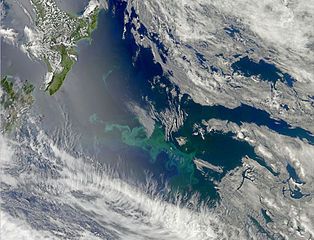Geo-engineering — The Grand-Daddy of All Decisions

There are so many strategic issues with geo-engineering generally that it’s hard to know where to start. Certainly we have to deal with unintended consequences, which, given the sheer magnitude of the problem and proposed solutions, could be horrific. We also have the issue of governance. Even if we come across a practical solution, who should administer it?
Normally, I advocate decisiveness and rapid response, but here’s an area in which I’m happy to see the world taking its time.

For the most part I chalk these absurd suggestions up to the equivalent of the Death Star petition.
They are considered actions that are on a scale and cost that is beyond our capacity or even our understanding. Let’s just leave this to science fiction and deal with the really-real world in ways that we can understand and manage with real budgets.
I was interested in the attempt to dump finely-ground rust into the sea, but that didn’t work…
There are no other quasi-feasible options out there – the closest to rational being cloud-brightening around the arctic and especially around Greenland, but that would be a hundreds-of-billions initial cost with a tens-of-billions/year budget, with high personnel risks for hundreds of nuclear-powered ship crews… and that’s the most cost-effective and plausible offering the world-shapers (geo-engineers) have (since the rust-dumping didn’t seem to work)???
No. Let’s just drop the dumb ideas and move towards mitigating further carbon emissions and accommodating the effects. Those are the options that we really have in front of us.
🙂